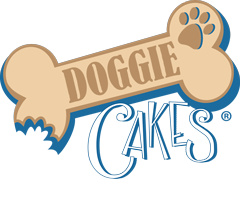Mastering Leash Training: How to Stop Your Puppy from Pulling
Welcome back to our series on Puppy Behaviors to Nip! In this blog, we’re focusing on one of the most common challenges for new puppy parents: leash pulling. Walking your puppy should be a fun and enriching experience, but a pup that pulls on the leash can make outings stressful and even unsafe. Let’s explore how to tackle this behavior effectively.
Why Do Puppies Pull on the Leash?
Puppies pull on the leash for several reasons, including:
- Excitement: They’re eager to explore the sights, smells, and sounds of the world.
- Lack of Training: Puppies need to learn what’s expected of them during a walk.
- Natural Instincts: Some breeds have a stronger instinct to pull, especially those bred for tasks like sledding or hunting.
Steps to Stop Leash Pulling
- Start with the Right Equipment
- Use a well-fitted harness or collar. For dogs prone to pulling, a front-clip harness can help redirect their momentum.
- Avoid retractable leashes, which can encourage pulling and reduce your control.
- Teach Loose-Leash Walking
- Begin in a distraction-free area, such as your backyard or a quiet park.
- Hold the leash with slack, ensuring it’s not taut.
- Reward your puppy with treats and praise when they walk beside you.
- Use the “Stop-and-Go” Method
- If your puppy pulls, stop walking immediately. Wait until they relax the tension on the leash before moving forward.
- Repeat consistently to teach them that pulling halts progress.
- Redirect Their Attention
- Use a treat or a toy to guide your puppy back to your side when they start pulling.
- Reinforce this position with rewards and verbal cues like “heel.”
- Shorten Walks to Focus on Training
- Keep walks short and focused on practicing good leash behavior rather than distance.
- Gradually increase the length of walks as your puppy’s skills improve.
- Incorporate Positive Reinforcement
- Praise and reward your puppy every time they walk beside you without pulling.
- Use high-value treats to keep their attention, especially in distracting environments.
Common Mistakes to Avoid
- Pulling Back on the Leash: This can turn walking into a tug-of-war game, reinforcing the pulling behavior.
- Using Harsh Corrections: Yanking the leash or using punitive tools can create fear and damage your relationship with your puppy.
- Inconsistent Training: Ensure all family members follow the same leash-training rules to avoid confusion.
When to Seek Help
If your puppy’s leash pulling persists despite consistent training, consider working with a professional dog trainer. They can provide personalized advice and techniques to address your specific challenges.
Leash training takes time, patience, and consistency, but the rewards are well worth the effort. A well-trained puppy not only makes walks enjoyable but also strengthens the bond between you and your furry friend.
Thanks for joining us in our series on Puppy Behaviors to Nip! Be sure to come back next week as we discuss tips for managing excessive barking, another common puppy behavior. Happy walking! 🐾




